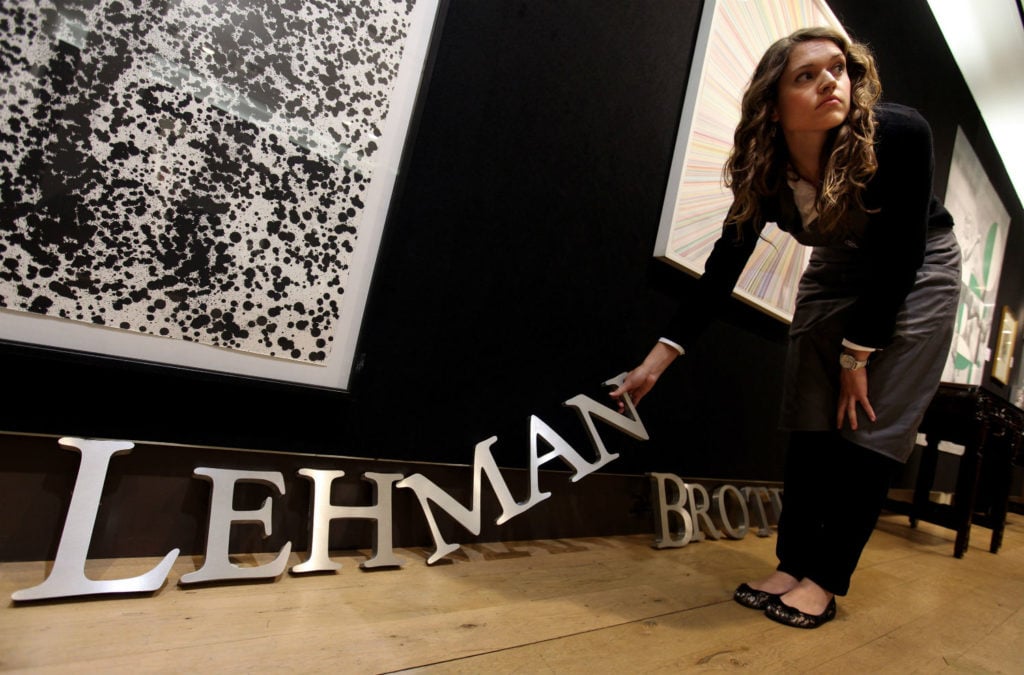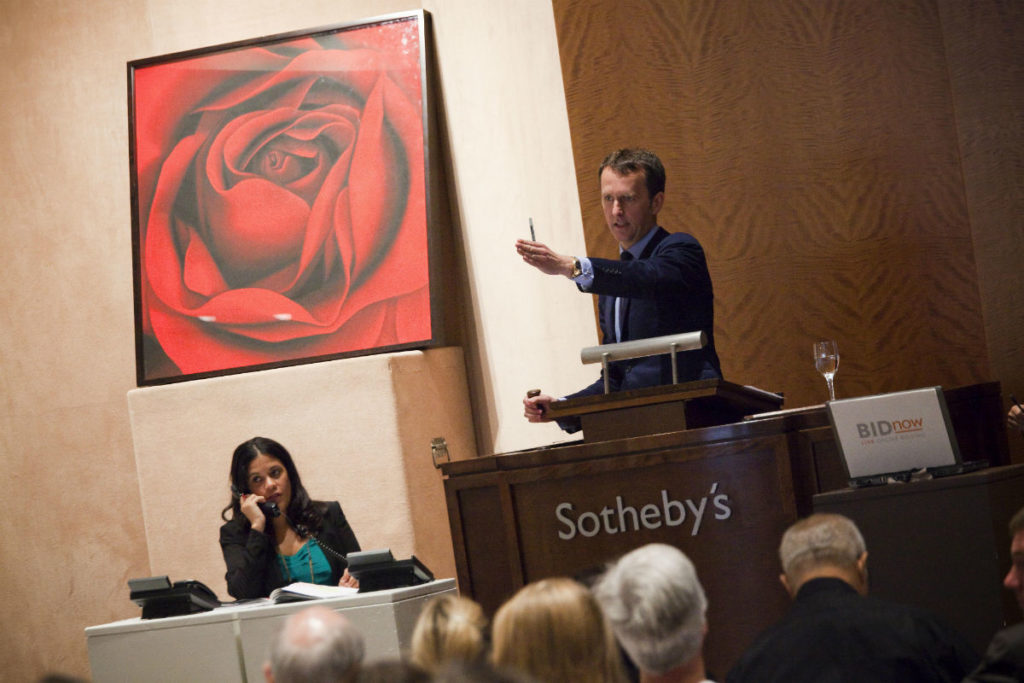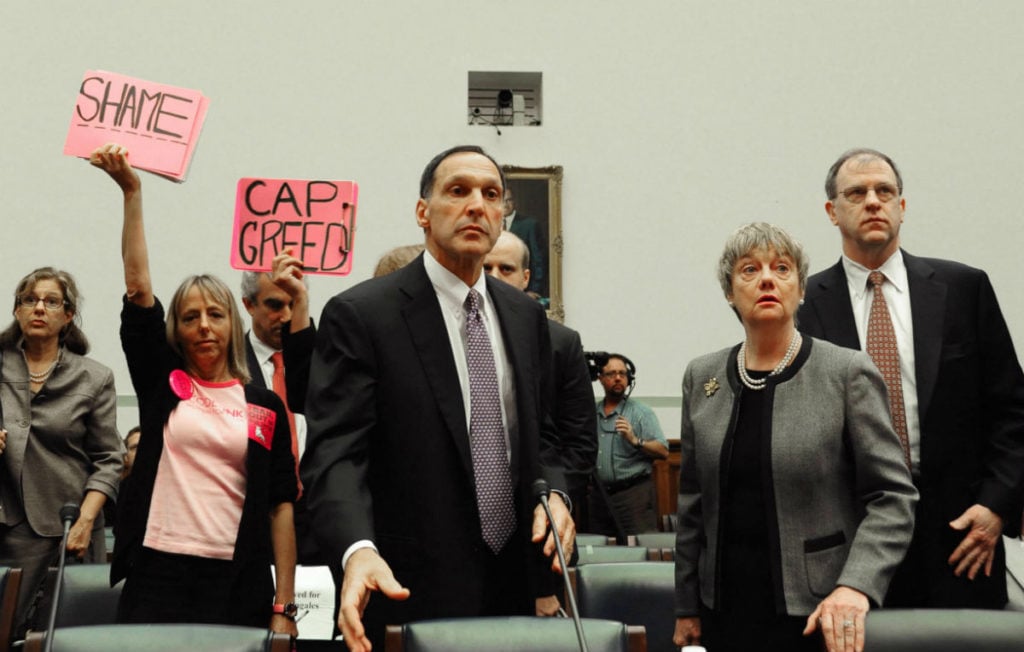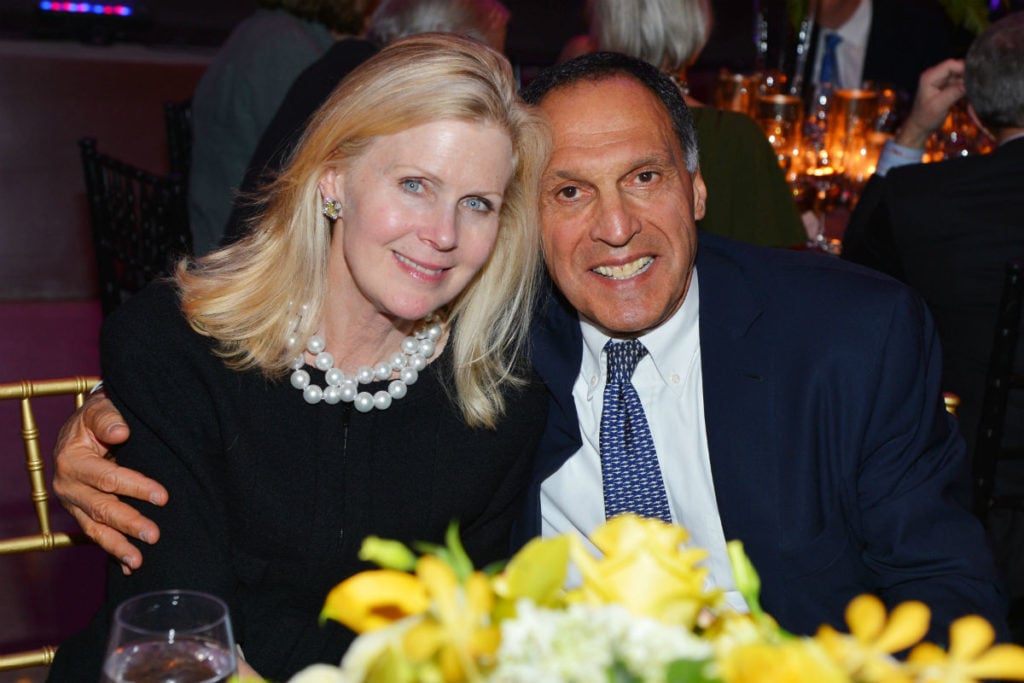Opinion
‘A Very Provocative Collection’: How Art Addiction at Lehman Brothers Helped Spark the 2008 Financial Crisis
Hey, remember how art helped bring down the world financial system in 2008?

Hey, remember how art helped bring down the world financial system in 2008?

Ben Davis

The 10-year anniversary of the momentous collapse of Lehman Brothers has pundits speculating aloud about whether we learned anything, and what might precipitate the next crisis. So we might as well take the moment to remember the unfortunate bit part that art played in this era-defining disaster.
Former Lehman vice president Lawrence McDonald made this argument in his 2009 book A Colossal Failure of Common Sense: The Inside Story of the Collapse of Lehman Brothers. In essence, he contends that a culture of excess among top executives, obsessed with status and its trappings, disconnected leadership from the daily problems of the firm and led them to place short-term profits above all.
As McDonald wrote for CNBC back in 2009, summarizing his case:
Lehman’s most talented people were horrified as they came to understand that [CEO Richard] Fuld and his cronies had a deep dark secret: They neither understood Lehman’s business, nor the depth of its distress–and they didn’t want their ignorance exposed.
A fair and logical question you might have: If Lehman’s top executives were not minding the store then what on earth were they doing?
Well how about keeping a sharp eye on the firm’s art collection? Not to mention Dick Fuld’s personal art collection worth more than $200 million at the top of the market. The 31st floor at Lehman Brothers looked more like a Sotheby’s art collection center than the nerve center of what had become a $750 billion hedge fund, which is exactly what Lehman had become by the summer of 2007…
In 2010, on the second anniversary of the collapse, big parts of Lehman Brothers’s corporate art collection actually did go to Sotheby’s to raise funds for its many creditors. The top lots were paintings by Julie Mehretu and Liu Ye, which went for $1 million and $960,000, respectively, followed by works from Mark Grotjahn, Neo Rauch, Gerhard Richter, John Baldessari, Olafur Eliasson, Glenn Ligon, Fang Lijun, and John Currin. It raised $12 million in all.

Auctioneer Tobias Meyer auctions off Robert Longo’s Untitled (November 2) and other art from Lehman Brothers’ collection at Sotheby’s on September 25, 2010 in New York Photo by Michael Nagle/Getty Images.
“It was a very provocative collection,” a Sotheby’s specialist said at the time.
(In Europe, Christie’s did the honors, raising about $2.5 million in a Lehman Bros. “Artwork and Ephemera” sale.)
All this is a footnote to the whole mess, of course. And it’s hard to say how seriously to take McDonald’s charge that executives’ preoccupation with gaining entry into “the $200 billion art club” played a role in causing them to take their eyes off of the ball. As a former Lehman VP himself, he has every reason to shift blame.
In The Weekend That Changed Wall Street, financial journalist Maria Bartiromo quotes an unnamed defender from Lehman, responding to McDonald’s charges: “To say Dick [Fuld] was not engaged is nonsense. Leading up to mid-September, he was working around the clock to save the firm.”

Members of the group Code Pink wave signs as Richard S. Fuld Jr. arrives to testify before the US House Oversight and Government Reform Committee October 6, 2008 on Capitol Hill in Washington, DC. Photo courtesy Karen Bleier/AFP/Getty Images.
Still, Fuld was preoccupied enough with his art collecting that in August 2008—just when Lehman Brothers was already deep enough in crisis that it announced it would lay off 1,500 employees—he and his wife, Kathy Fuld, secured a $20 million auction guarantee from Christie’s to sell a suite of 16 drawings from their spectacular collection of modern art.
That sale took place in November of the same year, as the Treasury and Federal Reserve were cobbling together emergency rescue programs to save large swaths of the economy from being destroyed by the fallout of the Lehman Brothers crisis. The Fulds’ trove of pieces by Arshile Gorky, Barnett Newman, and Agnes Martin fetched $13.5 million.

Kathy and Richard Fuld at the Lincoln Center 2014 Fall Gala. Image courtesy Patrick McMullan.
Unsurprisingly in those circumstances, the total was a disappointment. It came in below the auction house’s low estimate of $15 million, and well below that $20 million guarantee—proving that Fuld had at least done a killer job in those final, frenzied months of looking out for himself, if not for the company that he had driven into the abyss.